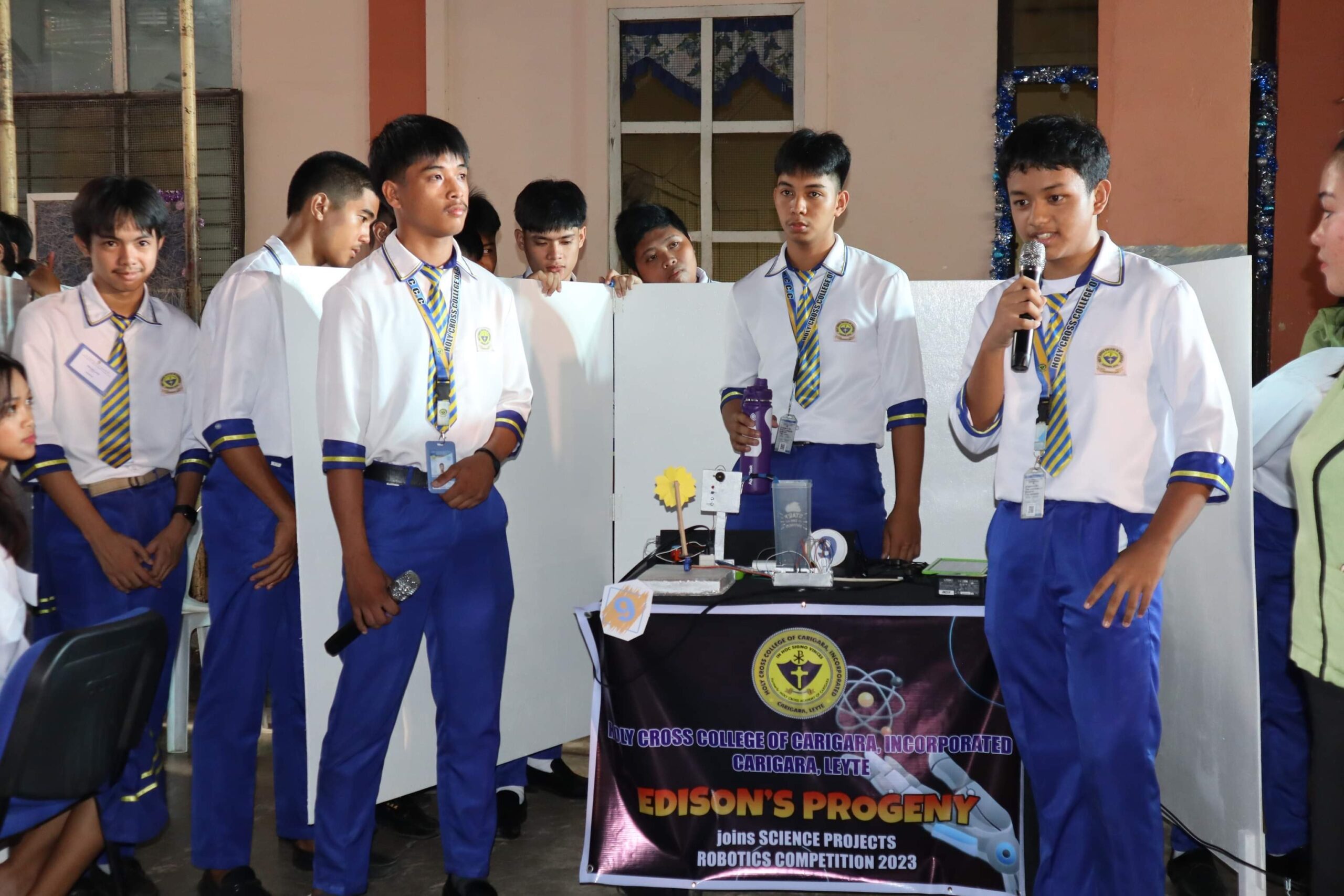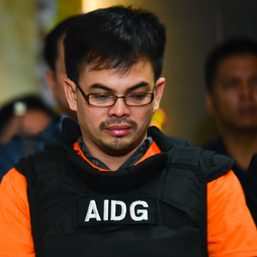SUMMARY
This is AI generated summarization, which may have errors. For context, always refer to the full article.

CEBU, Philippines – Exposing rural students to technology is crucial, as demonstrated by high school students in Leyte, a province severely affected by Super Typhoon Yolanda (Haiyan) in 2013.
The students showed their creativity and practical understanding of community needs through various inventions, including a prototype of a water level indicator and an emergency distress tracker (EDT).
Friendly science projects and robotics competitions among nine schools under the Roman Catholic Archdiocese of Palo (RCAP), held at the Holy Cross College of Carigara Incorporated (HCCCI) on December 13, served as the backdrop, where ideas of elementary and high school students had been polished up with the mentoring of professionals from the Department of Science and Technology, the local government unit, and the tech industry.
Carigara is a second-class municipality in the northern region of Leyte province, Eastern Visayas. The town is surrounded by rice fields stretching towards the distant mountains.
Among the outstanding student innovations, the water level indicator prototype created by the 10-member group Edison’s Progeny, of the HCCCI, secured first place in the high school level competition.
Grade 12 students Wilmar Oledan, Justin Paul Dacoycoy, Kurt Michael Padilla, Ken Clide Cordeta, Xymon Tagra, Earl Lorence Bantilo, Neo Ahmed Salvacion, Arianie Robel, Charina Canasta, and Carl Pascual have collaborated to create something useful in flood situations, sea level surveys, and aquaculture.
Using a 1K OHM resistor, LED lights, transistor, and buzzer, among other materials, the group invented a solar panel-powered water level indicator that provides both light and audio signaling for water level gauging.
“We (thought of) the best device that can indicate the gauge and water level, that is useful to us, which is why we decided to (create) a prototype water level indicator,” the group explained.
The students’ inventions, mostly created in less than three weeks, were evaluated for creativity, community relevance, and presentation quality.
Other notable student inventions were relevant to communication during times of calamity, as demonstrated by the ineffectiveness shown during the onslaught of Super Typhoon Yolanda, and even Typhoon Odette in December 2021.
A community that’s overly dependent on telecommunication companies requires alternative communication solutions in times of Yolanda-like calamities. However, alternative options like satellite communication could be too expensive for most communities in rural areas.
This is what the students from HCCCI wanted to address by developing an off-grid communication that works well with frequencies allowed by the law through the Long Range Low Power Communication Frequency.
Although the invention was not part of the official competition and was still under the school’s Center for Innovation initiative – a pre-qualifier for the actual science and robotics competition, the device is meritable on its own, as it can send a message up to 50-60 kilometers even without signal.
“If every barangay [and] household has this device, during any emergency, you can tell your relatives where you are,” said Gulshan Vasson, chief technology officer of TemaroTech, whose services range from mobile and web applications to Internet of Things (IoT) solutions, among others.
Vasson, one of the judges and benefactors of the event, said the technology behind the students’ off-grid communication prototype could also be utilized by the EDT invention.
The invention by Eric Lagarde, Nelvin Badian, Michael Rey Davocol, Edmund Cero, Ervin Jade Alfabeta, Carl Jade Anade, Michael Wael, Joseph Tonolete, Jersey Piangco, and Pan Mar Allan Sabillo, collectively known as the Omni Geeks, is designed to help the elderly communicate with their loved ones or guardians in times of distress with just the press of a button.
The EDT utilizes a Seeed Studio xiao ESP32C3 chip, sandpaper, 10K Ohm 1W resistor, battery, and recycled materials like plastic bottles. Using a global positioning system, the device can send an individual’s location to the intended recipient.
The downside, however, is its dependence on the internet and cellular connection, a concern that can be addressed by the technology used behind the off-grid communication invention.
Vasson emphasized the importance of investing in students so they can be empowered to help their locality.
“If everyone starts thinking like this and starts adapting schools and at the root level, empower them, later, these students can be a valuable asset for the country and to the industry as well,” he said, noting that students in remote areas should not be deprived of having access to technology which students of bigger schools in Metropolitan areas have access to.
Aside from boosting student confidence and learning entrepreneurship in selling and pitching their work, Vasson said the activity is a step toward helping the industry address the gap between what it needs and the skills of the graduates of Science and Technology programs.
Other remarkable inventions developed by neighboring schools affiliated with RCAP in the towns of Barugo, Isabel, Palompon, and Babatngon are leaf color indicators, vacuum, and robotic arm claw waste segregators. – Rappler.com
Wenilyn Sabalo is an Aries Rufo Journalism fellow.
Add a comment
How does this make you feel?











There are no comments yet. Add your comment to start the conversation.